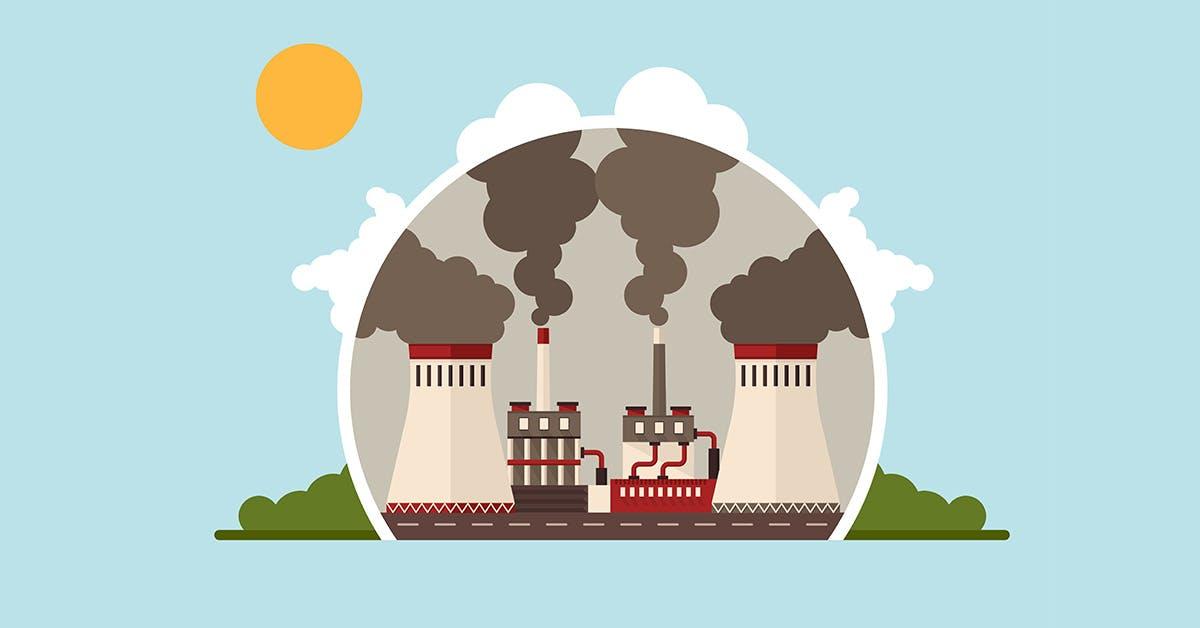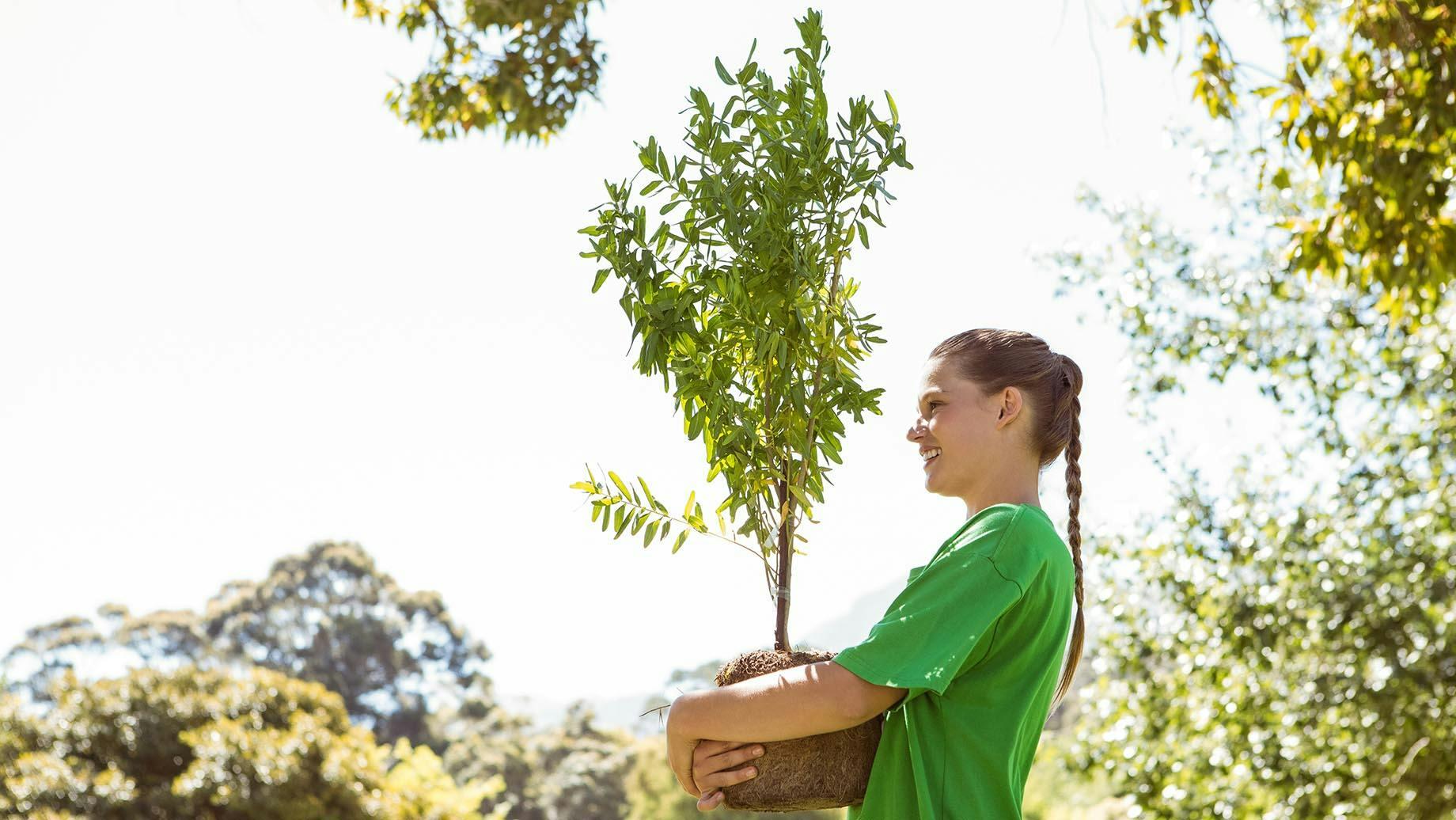
What is Green Energy? Types, Definition & Examples
Inspire Clean Energy
11 min read
category: Clean Energy 101
Don't worry about climate change— do something about it.
Our clean energy plans are the easiest way to reduce your home's carbon footprint.
Switch to clean energyGreen Energy: Meaning, Definition & Examples
Not all energy is created equal. And as everyday energy consumers, we all should know where our energy is coming from and its effect on the environment. Fortunately, we now have the power not only to find out where our energy is coming from but, in many cases, choose where it comes from, too.
Let's start by looking at the definition of green energy; then, we'll explore its benefits and much more.
What does green energy mean?
Green energy is a term for energy that comes from renewable sources. Green energy is often referred to as clean, sustainable, or renewable energy. The production of green energy doesn't release toxic greenhouse gases into the atmosphere, meaning it causes little or no environmental impact.
Why is it called green energy?
Green energy got its name because it comes from natural resources provided to us by the Earth. The color green is often associated with health, nature and sustainability, so it makes sense that renewable energy is related to the color that embodies nature.
What is green energy and how does it work?
Green energy comes from natural resources like water, wind and sun, which provide the energy we turn into electricity.
Let's take a closer look at each green energy source and how they work:
- Solar energy: Solar panels use silicone sheets with energy-absorbing cells to convert sunlight into electricity. Solar power is a relatively accessible resource, and people can harness solar power industrially or individually by installing solar panels on buildings and homes.
- Wind power: Wind turbines generate kinetic energy that we then use to create electricity. The harnessing of wind power doesn't require much human labor, and it is known as one of the most environmentally friendly resources.
- Hydropower: Hydropower plants capture kinetic energy from the currents flowing in streams and rivers. This is done through the use of a turbine built into a dam.
- Biomass: Energy can be generated from agricultural, urban and industrial waste. Biomass can be harnessed by burning wood and energy crops grown specifically for this purpose. Wheat, sugar beet, sugar cane and maize are often fermented to produce bioethanol.
- Geothermal: The heat held within the fluids and rocks beneath the Earth's crust can create energy. To harness geothermal energy from the steam and hot water, workers dig mile-deep wells into underground reservoirs. They then use this steam and hot water to power turbines connected to electricity generators.
What are the benefits of green energy?
For many people and organizations, green energy's main draw is that it's less harmful to the environment. Green energy sources like wind and solar power are superior options for avoiding harmful greenhouse gas emissions. While installing wind turbines on homes may not be possible, we can choose utility providers that supply green energy.
Green energy is also better for our physical health as it is far less responsible for polluting our air and water. According to the World Health Organization, household and ambient air pollution causes 4.2 million deaths around the world annually. Most of these deaths occurred in low- to middle‐income countries, especially Southeast Asia and the Western Pacific regions.
For this reason, we must focus more on renewable energy sources that cause less damage than their unsustainable counterparts, especially in less affluent countries.
Green energy sources like wind energy and solar power are far more sustainable options compared to fossil fuels. They offset the emissions of oxide, nitrogen dioxide and sulfur dioxide, saving substantial health issues. Renewable energy is also responsible for job creation, employing nearly 500,000 people in the U.S. in 2021.
Another advantage of green energy is that the naturally occurring resources used to harness this renewable energy will not deplete over time. Solar power is available as long as the sun continues to shine, wind energy is possible as long as the wind is blowing, and hydropower will exist as long as lakes, streams and rivers continue to flow. Each resource's consistency and reliability depend on the location; for example, the U.S. is better suited to generate solar power than other countries that receive less direct sunlight. Similarly, windy areas such as plains and the coast will likely yield better energy generation results for wind farms.
What makes an energy source green?
For an energy source to be considered green energy, it must fall within the ranges of zero, low or neutral in greenhouse gas emissions during energy generation and operation. A zero greenhouse emissions green energy source is exactly what it sounds like; no greenhouse gases are created during the energy source's generation. A neutral greenhouse emission energy source, like biomass, for example, produces some greenhouse emissions when it is used. Its emissions are balanced out by the fact that the biomass absorbs carbon dioxide during the growing process. A low greenhouse gas emissions energy source will still create some greenhouse gases, but the amount may be minimal, especially when compared to burning coal or natural gas.
What is the cleanest source of energy?
Wind is the cleanest energy source, as it reduces our reliance on fossil fuels and the amount of dangerous CO₂ that pollutes the air.
Unlike other forms of renewable energy, wind power does not require much external input. For example, wind turbines do not need water to produce electricity, so using them instead of thermal power plants saves billions of gallons of water each year. Last year, wind energy generation decreased water consumption at existing power plants by about 103 billion gallons. Wind turbines are also one of the only energy sources we can install and maintain offshore. Offshore wind farms provide an invaluable opportunity to harness powerful maritime winds without disturbing nearby residents.
While direct pollution is important to note, it's also worth remembering the indirect ways energy sources can cause pollution. For example, geothermal energy is a sustainable resource creating renewable energy, but some energy is required to harness that energy, which may come from nonrenewable sources. One could also factor in the emissions created while employees travel to their worksite, assuming they are using gas-burning modes of transportation.
Is nuclear energy green?
Nuclear energy can be considered green energy because it produces zero greenhouse emissions during energy production and operation. But some often question if nuclear waste and its storage can be dangerous. Nuclear waste can unleash toxic chemicals into the environment from improper storage/disposal or natural disasters (think: tsunamis or hurricanes). Also, some forms of nuclear waste can take thousands of years to break down to a point where its radioactivity is harmful to humans, animals and plants. For these reasons, some people are hesitant to put nuclear energy in the same category as wind, solar and hydro. But, if you are looking strictly at the numbers, particularly the amount of greenhouse gases it produces, then it can be considered green energy.
An advantage of nuclear energy is that it produces large quantities of energy from a relatively small amount of land. A nuclear facility in the U.S. that produces 1,000 megawatts of energy needs about one-square mile to operate. A wind farm would need 360 times more space to have the same energy, and a solar plant would need 75 times more. Another advantage of nuclear power is its energy efficiency due to its highly dense output.
What are the drawbacks of green energy?
Although the last few decades have seen exponential growth in renewable energy use, some drawbacks to green energy need to be considered.
Here is a breakdown of some of those disadvantages:
- Unreliability: Some sources of renewable energy depend on weather and atmospheric conditions to function. Hydroelectric dams need enough rainfall to fill the dam and to have a constant supply of flowing water. Wind turbines require wind blowing at a minimum wind speed to move the blades. Solar panels need skies to be clear and filled with enough sunshine to generate electricity. In addition, solar panels cannot generate electricity at night.
- Lower-efficiency: More work still needs to be done to make renewable energy more efficient at harvesting energy and converting it to electricity. Because of this, installation projects and the maintenance of some renewable energy sources can be pretty expensive at times, discouraging investment from companies and governments.
- Space: Compared to other sources of energy, renewable energy sources take up space to produce energy. Solar energy can use over 100 acres of solar panels to produce around 20 megawatts of power. In comparison, a nuclear facility that is 650 acres can produce about 1,000 megawatts of electricity, whereas a solar plant the same size would only have 200 megawatts. A two-megawatt wind turbine requires 1.5 acres of space.
- Storage can be expensive: Renewable energy often needs to be stored in a battery. Just one battery can cost $10,000 to $25,000.
- Generation capacity is still lower: Currently, renewable energy generation capacity is not large enough to meet our energy demands. As renewable energy technologies improve and energy consumption decreases due to more efficient appliances, electronics, and lighting, there may be a time where our construction of new and additional renewable energy plants will catch up to meet our energy needs. We are not there quite yet, and will still use fossil fuels and nuclear energy to supply a good portion of our energy until then.
Even though green energy is needed for the future, plenty more work is required to make renewables our primary energy source.
What is the best source of green energy?
It is hard to pinpoint which green energy source is the best. Some experts argue that nuclear power is best because of its energy and space efficiency. Others would say that hydropower is the best because it is the largest renewable energy supplier in the world. It is less important to determine which source of green energy is the best, but instead, it is better to recognize the importance of green energy and its role in our future energy needs.
Why do we need green energy?
Green energy is essential because it produces little to no greenhouse gas emissions. Reducing greenhouse gas emissions will lower air pollution and help curb the devastating effects that fossil fuels have on climate change. Green energy also allows us to diversify our energy supply while reducing our dependence on imported fuels. Investing in green energy also produces jobs, especially for our next generation of workforce.
What is a green energy plan?
Green energy is energy created from natural sources. Therefore, a green energy plan is what residents use to access renewable energy at home. As an Inspire member, you can get access to clean energy for one flat monthly price. By simply signing up at Inspire, you have the power to make a difference. Various energy companies can offer different plans. You will need to find a provider in your area that offers a green energy plan that works for you.
Is green energy right for me?
Green energy sources are far better for the environment, so if you're interested in using resources that are healthier and longer-lasting, green energy is undoubtedly right for you.
Resources like wind power are also getting cheaper each year. One U.K. renewable report estimated that electricity generated from onshore wind or solar power could be supplied at half the cost of gas-fired power plants by 2025. This cost reduction often means that utility providers can offer customers fixed prices on energy for up to 25 years, hedging against fluctuating fuel costs.
So, what does all this mean for consumers?
The growth of wind energy means more accessible clean energy for the masses. For consumers, it means steady and predictable prices and the knowledge that we are doing our part to reduce the need for environmentally harmful energy sources.
As an Inspire member, you can access clean energy for one flat price while reducing your home's carbon emissions.
So how does it work?
To get started, visit our homepage and enter your address and/or ZIP Code. If Inspire's clean energy supply plans are available in your area, you can proceed with linking your utility and discover the beginning of consistent and predictable monthly energy bills.
Access clean energy for one flat monthly price — subscribe today.
Don't worry about climate change— do something about it.
Our clean energy plans are the easiest way to reduce your home's carbon footprint.
Switch to clean energy
Inspire Clean Energy
We're on a mission to transform the way people access clean energy and accelerate a net-zero carbon future.
Learn more about Inspire →Explore more
Recent Posts
Top Articles





















